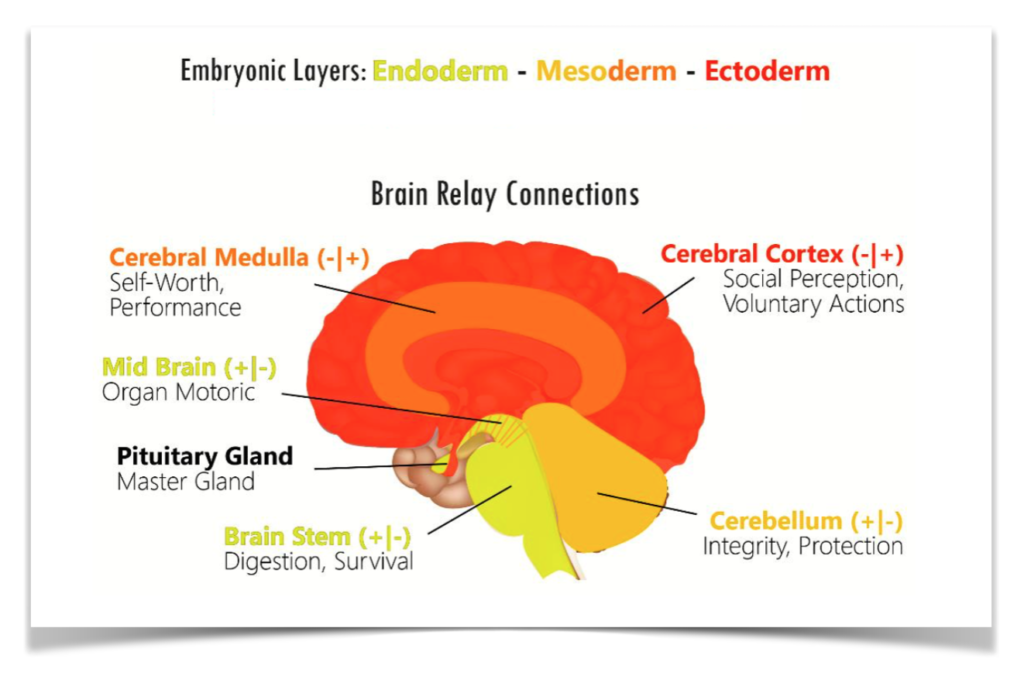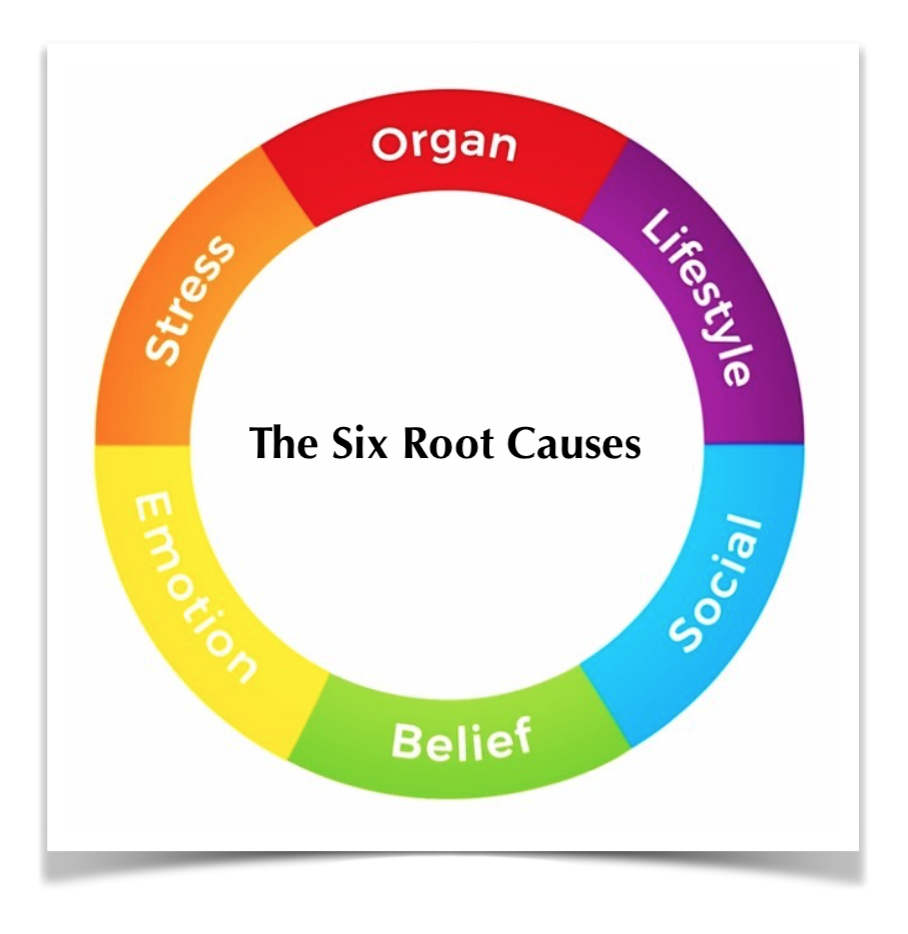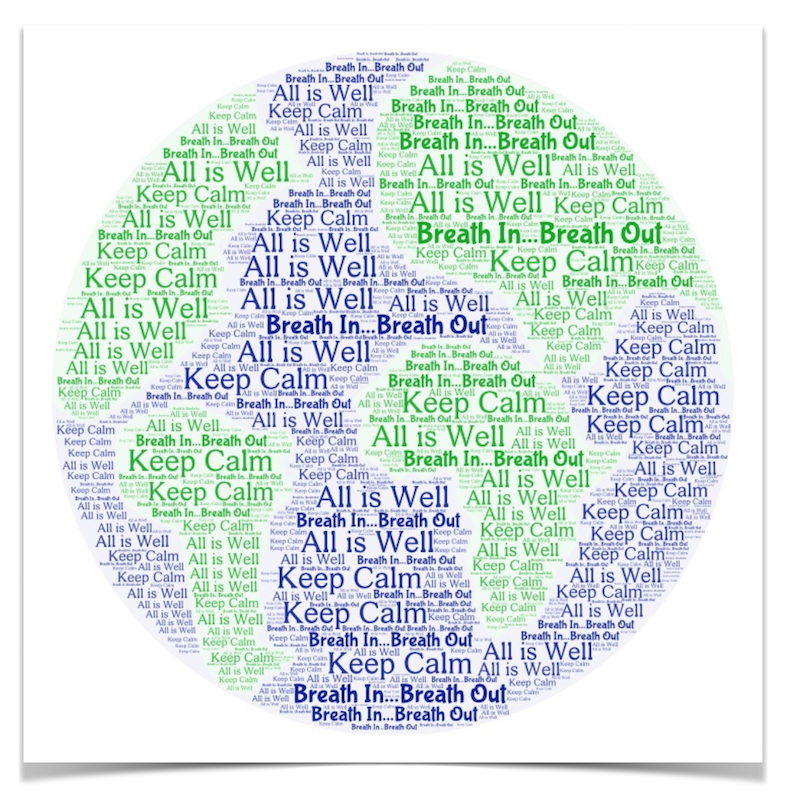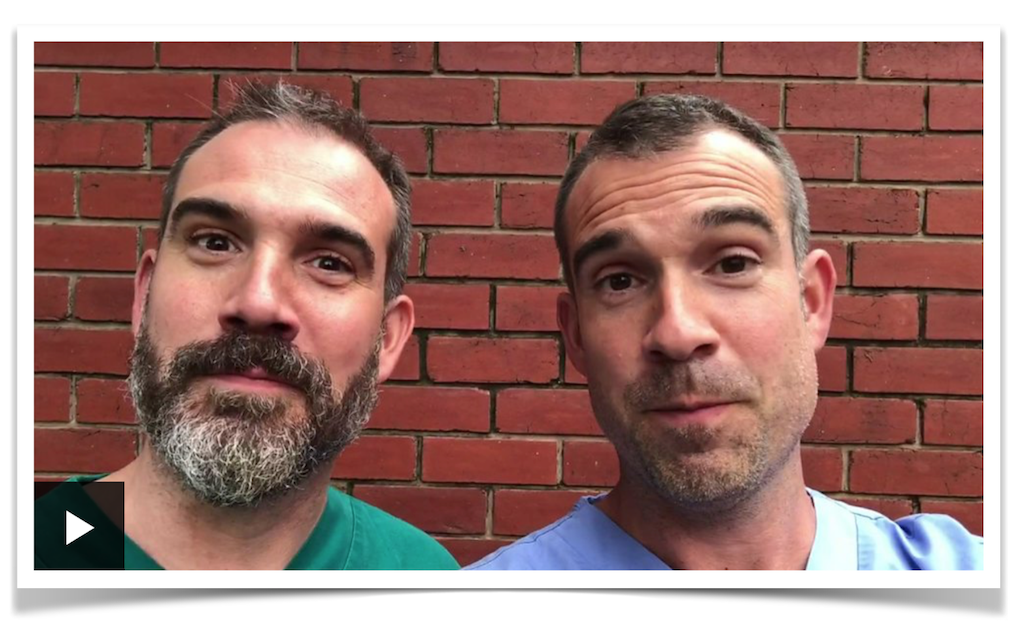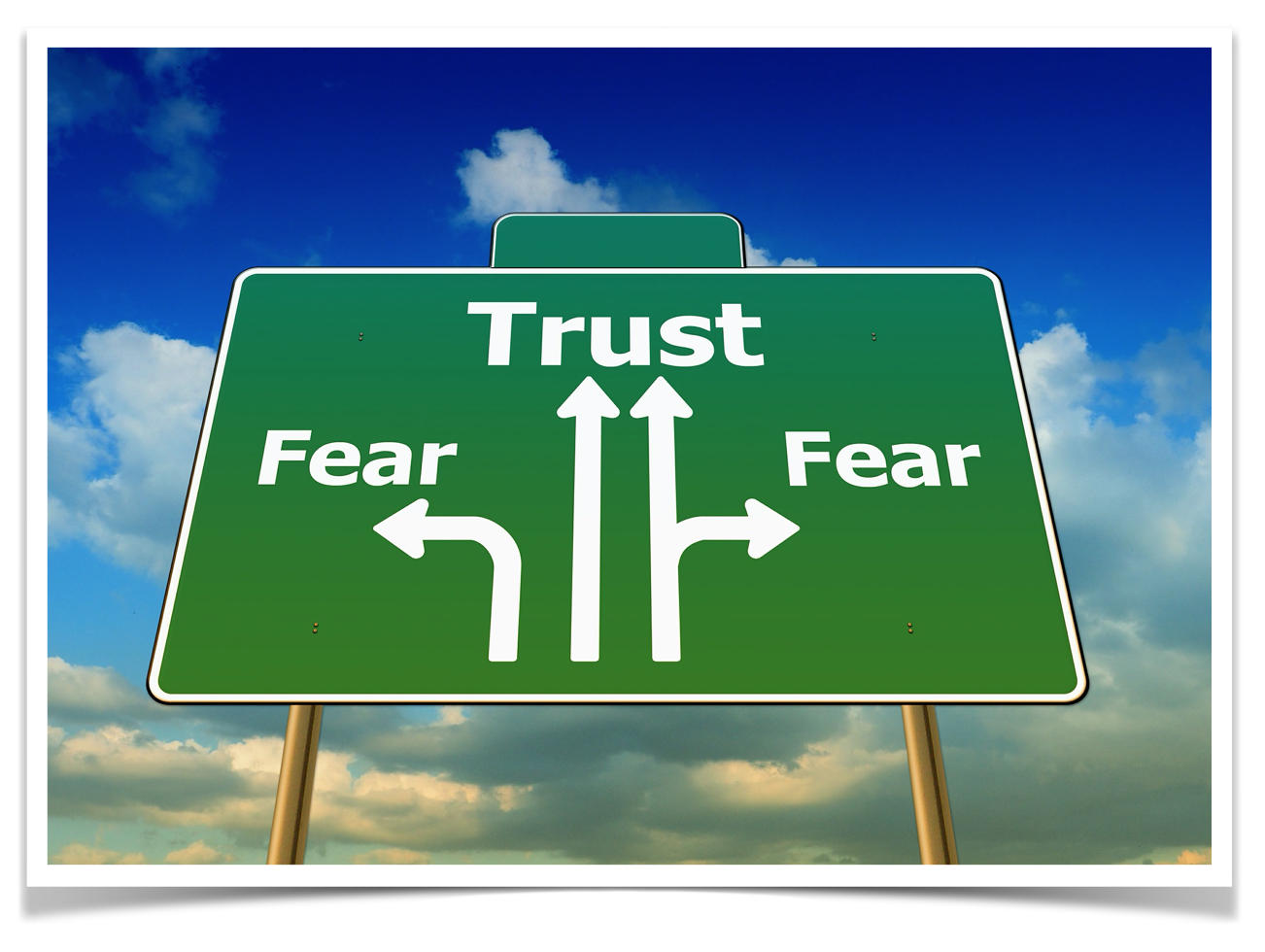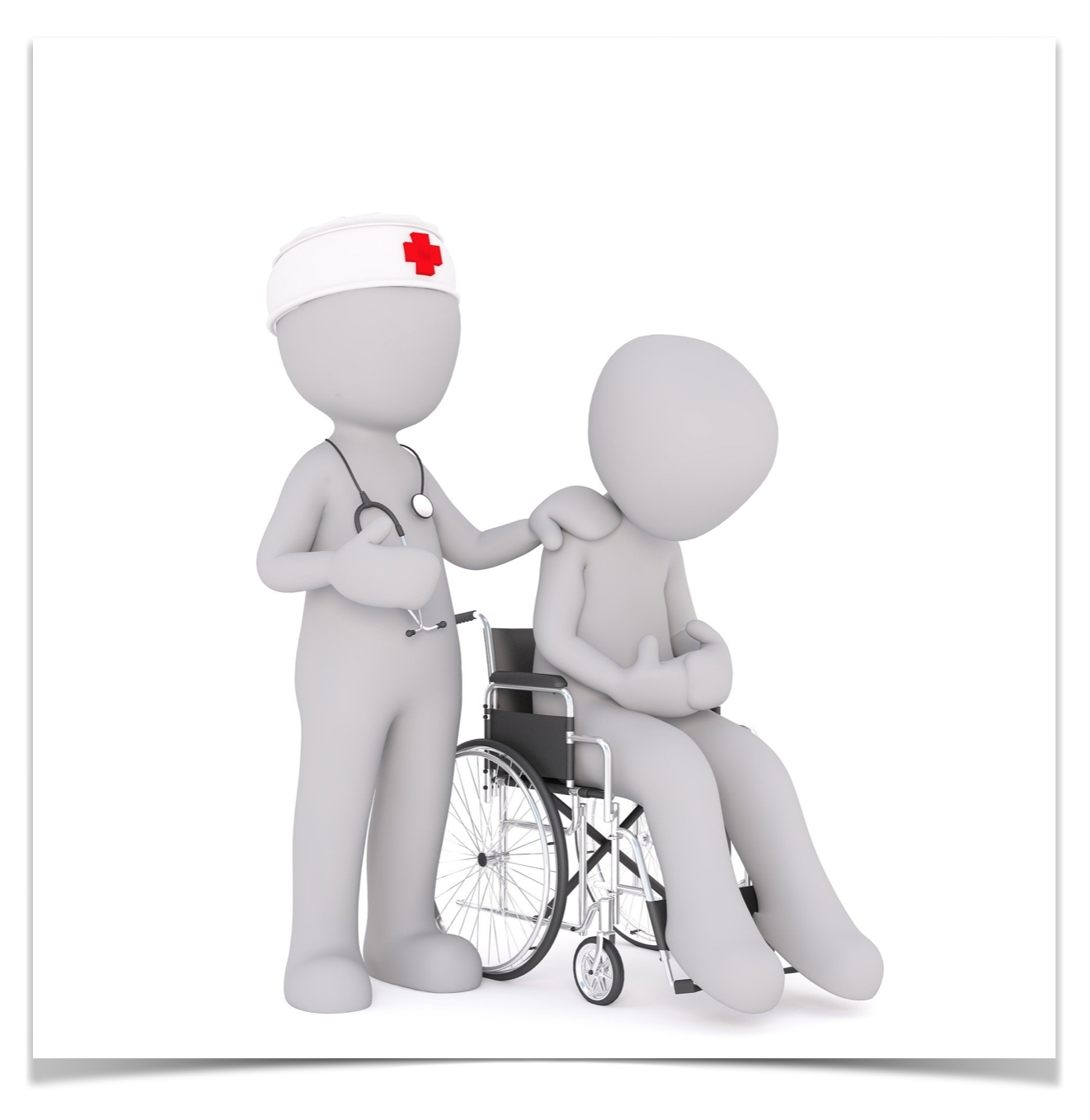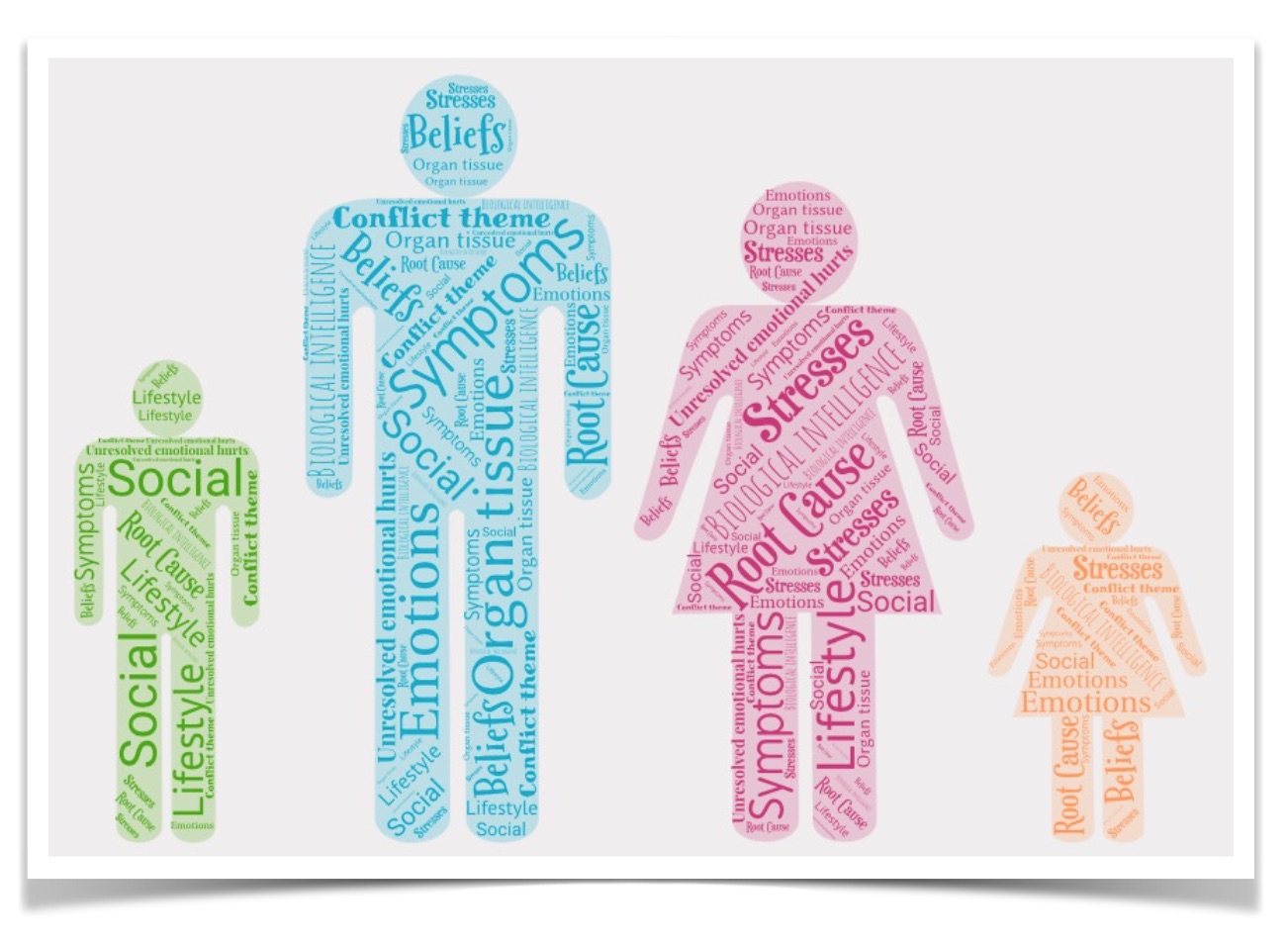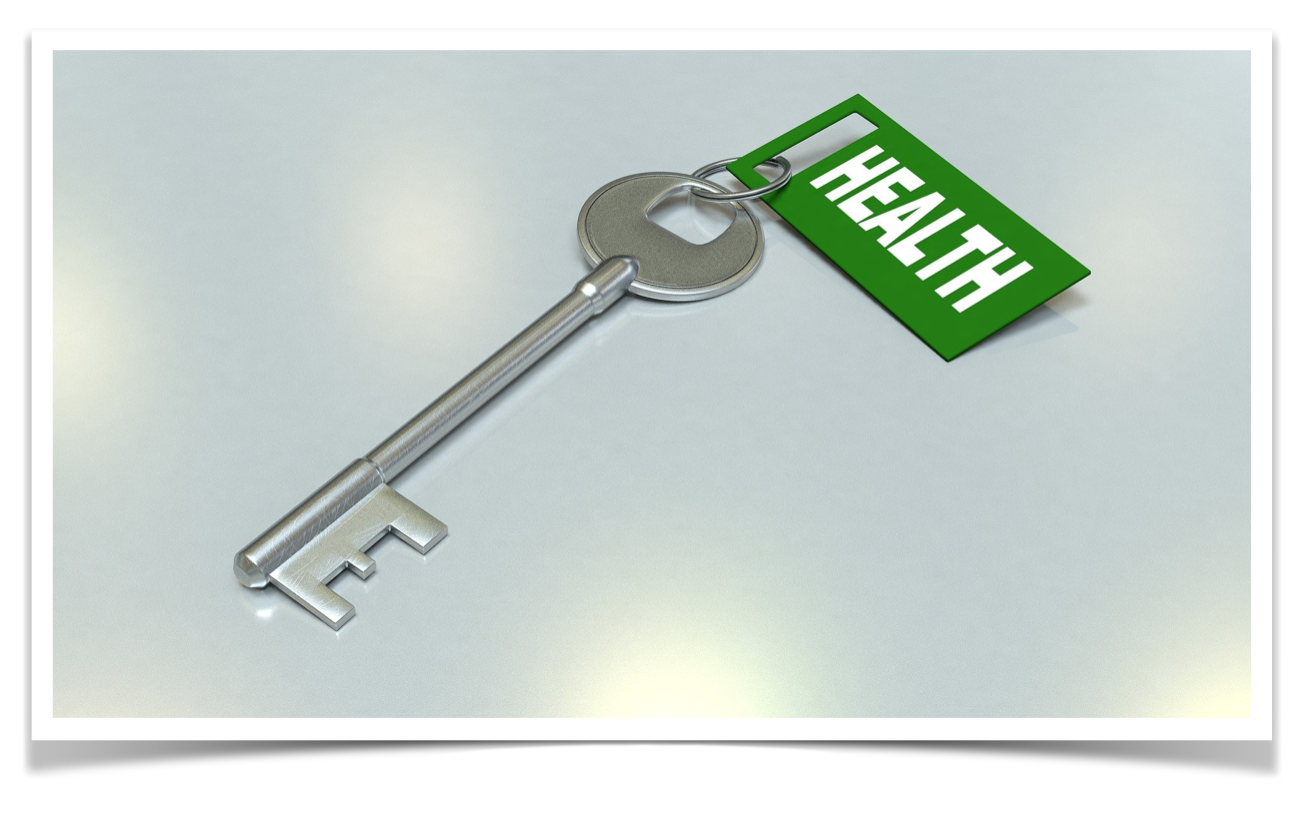Immune Support Tips & Ideas – Day 1
Our Sense of Touch & Contact – what our epidermis is really saying to us
I was six weeks old when my journey with skin symptoms began. It was eczema on my face…specifically around my mouth and on my cheeks. I was unexpectedly taken off my mother’s breast at six weeks, subsequently developing the characteristic redness of eczema on my face and also a very obvious intolerance to dairy formula milk. Coincidence? Read on…
The Sensory Skin System
The epidermis (the top layer of our skin) is predominantly responsible for sensory perception such as temperature, pressure, and touch. It covers the underlying dermis layer of skin (where acne develops from).
In terms of embryology, the epidermis originates from the ectoderm, which is part of the new brain and is therefore influenced and controlled from the cerebral cortex brain relay, or more specifically, the sensory cortex.
Why is this significant?
With the new scientific research which has been growing in the last few decades, and is now known as the new biology, we have come to realise and understand that there is a direct link between specific organ tissue, brain relay and embryology which indicates that our human needs are biological needs deeply rooted in our unconscious mind.
The symptoms which show up for us individuals are a result of a body-mind-social connection (see previous posts about this). Therefore, our symptoms are a direct reflection of our perception of unfulfilled biological needs e.g. emotions such as feeling safe, secure, accepted, confident etc – which in turn determine our values and beliefs and thus equate to why we experience, what to us as individuals, are perceived as conflict shocks and stress triggers at the moment they happen.
The Brain
The cerebral cortex part of the brain (the outer layer, which forms part of the new brain) is related to and concerned with the social part of our lives. It’s all about our relationships, both one-on-one relationships and in the greater family or tribe/community/society we’re part of; how we communicate in these relationships; how we fit into the hierarchy within this space and network; and having a sense of belonging in all of this.
When in balance, everything flows, The focus is for the greater good; it taps into our spiritual selves; we are present within and on the outside with others and we have a sense of being and meaning in all we’re doing, for the highest good of all.
Currently, our world is experiencing quite the imbalance in this area of life (and in all areas to be fair, with what’s going on globally). We’re seeing, feeling and hearing a lot which is creating a lot of stress within us, which is often being felt like a separation from the true sense of being and meaning in life; it feels like a loss of contact with the greater good of all.
Six Root Causes
As discussed in previous posts, there are six main root causes of symptoms which show up for us and usually it is a combination of two or more, which are out of balance within us, when we do present with symptoms, such as eczema, hives, measles, psoriasis, warts etc.
Briefly, these six root causes are the organ itself – how healthy is it?; stresses going on for us; emotions we’re feeling; beliefs we have about life and the world we live in; the social side of life (including work, home and outside social circles); and our lifestyle (which includes what we eat, what physical activity we do, our personal care products and rituals etc).
Stress trigger themes
From the mind-body-social functional medicine perspective which I work from, there is a biological stress trigger (conflict) theme linked to every organ and organ tissue in our body, which is connected to a specific brain relay, and this determines the level at which the conflict is being felt at.
With the epidermis layer of the skin, the theme is experienced as what is described as a separation conflict. This can be a loss of physical contact, from something or someone we want to be connected with and or to; or it can be a separation we would like to have or indeed need from someone or something which we do not want or like in some way shape or form.
So for example, like myself, at six weeks of age, I was suddenly separated from my mother’s breast and it was an unexpected, dramatic and isolating moment for me, where I didn’t have a strategy to fix or resolve it at that time. These four components are what constitute that stress trigger in our system – we call it a UDIN moment (Unexpected, Dramatic, Isolating, No Strategy).
Babies often experience this conflict when they’re separated from the mother at birth (e.g. being in ICU or given up for adoption). A separation conflict can occur in utero as well.
For an infant, the mother is the most important attachment presence in their young life, because of their connection during pregnancy and in the initial stages post-partum. Because of this connection and bond, it’s the mother who is perceived as the one to protect her child – she’s there on many levels to prevent stress and conflicts from happening. Therefore, it’s often the case, when a small child has a separation conflict, the mother was usually absent when the stress occurred.
Examples can be when a new sibling is born who appears to get more attention; when parents separate and children are split between homes; children not being able to see friends; separation from a toy or pet they like to snuggle. It’s also a pivotal time if the mother returns to work and the child is put into the care of others at nursery or a nanny or even another relative.
In parallel, elderly people may feel separated from their tribe/family if they move into a care home or following the death of a spouse or close companion.
Fears can also provoke the conflict e.g. fear of losing touch or contact with someone (maybe they’re moving away) or a feeling of rejection by a person because of an argument can trigger the conflict.
In a similar way, this theme also includes wanting to separate or cease contact from someone i.e. you really want to but for whatever reason, you’re unable to push or get away from that someone (literally or metaphorically). e.g. an abusive partner or parent or a bully at work or school.
Furthermore, it also refers to that desire/need/want to separate from something close to the skin e.g. glasses; a face mask; an item of clothing or a hat; shoes (such as bowling alley rental shoes); a soiled/wet baby’s nappy. By the same token, this theme also includes the feeling of being separated from something you’re unable to touch or feel close to any more e.g. a wedding ring, a musical instrument, a golf club (or similar sports item).
hat; shoes (such as bowling alley rental shoes); a soiled/wet baby’s nappy. By the same token, this theme also includes the feeling of being separated from something you’re unable to touch or feel close to any more e.g. a wedding ring, a musical instrument, a golf club (or similar sports item).
The Stress Phase
During this first phase, right after the trigger, the top layer of our skin, the epidermis, ulcerates where the separation/contact stress is felt. This is usually completely unnoticed because this is all happening in our subconscious and is a very sudden and automatic response to the emotive feeling.
However, when this stress phase is prolonged, signs of an imbalance will begin to surface, such as dry, rough, flaky, pale skin and coldness due to poor blood circulation.
If this stress phase becomes chronic, the skin starts to crack, which may include bleeding in more severe cases, leading to ulceration. Ichthyosis, which is identified by its fine scaling symptoms, indicates a chronic intense stress phase.
Another example of this prolonged stress phase is what is commonly known as dandruff on our scalp. When this is more intense and chronic, deep ulceration of the epidermal skin causes hair loss i.e. alopecia.
Other Stress Phase Aspects
Another common symptom which occurs in this stress phase, though not associated with epidermal skin issues in general medicine, is a short-term memory loss. The purpose of this is to temporarily forget the person we’ve been separated from by inhibiting the memory. In children, this shows up with challenges in learning and focusing…nowadays labelled as attention deficit disorder (ADD). In adults, chronic separation conflicts can lead to dementia.
Vitiligo is another symptom I’ve been managing since I was about 20. This happens because the ulceration (mentioned above), extends into the deepest 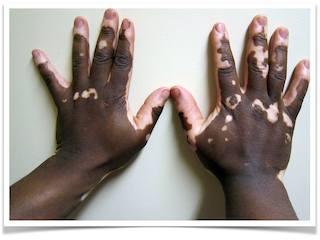 layer of the epidermal skin, where melanin is produced, or not as the case is with vitiligo. The stress of this type of separation is perceived by the individual as feeling especially intense or brutal, e.g. physical abuse or torn from a loved one. The symptoms show up where the separation is felt by that individual. Hair also turns white in these areas. For me, my armpits are almost totally white, along with some smaller patches on my arms, legs and shoulders. That said, because I’m working on the associated stress triggers for me, the pigmentation has begun to return.
layer of the epidermal skin, where melanin is produced, or not as the case is with vitiligo. The stress of this type of separation is perceived by the individual as feeling especially intense or brutal, e.g. physical abuse or torn from a loved one. The symptoms show up where the separation is felt by that individual. Hair also turns white in these areas. For me, my armpits are almost totally white, along with some smaller patches on my arms, legs and shoulders. That said, because I’m working on the associated stress triggers for me, the pigmentation has begun to return.
The Restorative Healing Phase
In the first part of the restorative healing phase, the affected skin location turns pinkish/red, before a slow repigmentation process begins in the second part of this phase. However, if you’re being retriggered by the original stress during this time, hyperpigmentation can occur – café-au-lait spots.
Another aspect of the first half of this healing phase is the skin swelling up, becoming red, inflamed, irritated, itchy, and sensitive to touch. This is because the ulceration from the stress phase is now being repaired through prolific cell growth. Unfortunately for those of us who know this only too well (me), this often includes small fluid-filled type blisters. Provided you don’t experience any retriggering stresses, the skin is able to further heal and repair in the second half of this phase. Those blisters will dry up and the skin returns to normal.
What is important to realise in this healing phase, however, is the skin does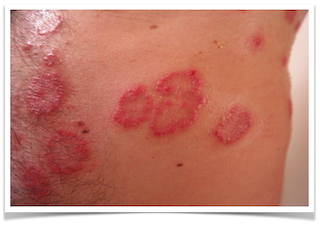 develop the characteristic rash we see in cases such as hives, eczema, lupus, measles, dermatitis, herpes, chickenpox, impetigo, rosacea, rubella and psoriasis. Though all slightly different, they all have the same separation/contact stress trigger theme in common.
develop the characteristic rash we see in cases such as hives, eczema, lupus, measles, dermatitis, herpes, chickenpox, impetigo, rosacea, rubella and psoriasis. Though all slightly different, they all have the same separation/contact stress trigger theme in common.
Location – the significance
When the separation is unwanted e.g. unable to cuddle a loved one, the symptoms most often appear on the inside of arms, hands, fingers, or legs. On the contrary, wanting to break contact/separate from someone, typically appears on the outside of arms, hands, elbows, legs, knees, shinbones, or ankles, to metaphorically push or kick the unwanted away.
Furthermore, depending on the detail of the stress and perception of the afflicted, skin rash symptoms can also be more pinpointed in where they appear e.g. the scalp, face or lips (i.e. cold sores); the chest, stomach, genitals (external); feet and toes; and the back.
When all over (which is what I experienced when the eczema was at its worst in my late 20s – head to toe, cracked and bleeding) a widespread skin rash indicates general stress being experienced as a whole. In this case, what is also important to know is this can also be caused by poisoning e.g. from medication i.e. the body as a whole wants to separate from this poison within.
When rash symptoms are chronic and recurring, it is due to the original stress being retriggered in some way. e.g. when I was suddenly taken off my mother’s breast at six weeks and given formula milk (derived from cow’s dairy) I not only developed eczema on my face, where I felt the separation from my mother’s breast, but I also developed a very obvious intolerance to cow’s dairy, which was subsequently removed from my diet. Therefore, what is important to realise is, foods or pets or plant pollen, for example, are often associated aspects of a separation conflict, because they were present at the time the stress was triggered and thus, an unconscious association is formed, as part of our fight or flight stress response, to help keep us safe.
Specifics
Rosacea and lupus, which generally appear on the nose, chin, and cheeks, are most often associated with a separation to do with the face e.g. loss of contact felt on the face or wanting someone to literally or metaphorically get out of your face. Nerve pain is also often experienced in the healing phase with facial skin rashes.
As we know with chickenpox (me again), measles and rubella, the rash covers most of the body. These general separation conflicts are more frequently encountered by young children because they tend to feel more vulnerable regarding separations from the tribe/family/unit (e.g. around home or at school).
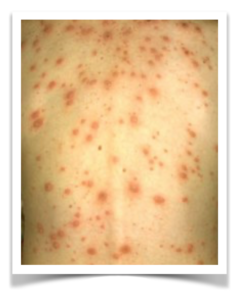 Chickenpox is felt much deeper than measles and rubella because it goes
Chickenpox is felt much deeper than measles and rubella because it goes
deeper into the epidermal skin layer. The length of the stress phase also impacts on the severity of symptoms too e.g. rubella is milder than measles. Other aspects also play a role with what symptoms occur as well e.g. if the child feels particularly isolated or abandoned, the blisters will appear worse or if the healing phase is intense, a high fever could also present.
Contrary to modern medical dogma, when we look at the science of human biology and embryology, coupled with the epigenetic science of the mind-body-social connection, these apparent contagious childhood viruses are actually the healing phase of separation conflicts being experienced by many children at the same time.
These communal separation conflicts can be and often are either school-related (e.g. a separation associated with a friend at school) or home-related impacting all children in a family.
For example, if you look at the statistics, measles typically appears after the settling in period of starting anew at nursery or infant school and the child has become familiar with their new teacher and made some friends. They’re also now comfortable with their new schedule of parents dropping and picking them up. The skin rash indicates that the stress of the separation has been resolved for the child. What spreads is the perceived notion/belief/emotion of not being allowed or not wanting to have contact with someone who has the infection. Supposed outbreaks in schools, for example, are often associated with the fear of coming in contact with an infected child i.e. wanting to separate/not have contact. It can also be the loss of being connected with a new best friend.
not being allowed or not wanting to have contact with someone who has the infection. Supposed outbreaks in schools, for example, are often associated with the fear of coming in contact with an infected child i.e. wanting to separate/not have contact. It can also be the loss of being connected with a new best friend.
Psoriasis occurs because there are two conflicts involved. One is in the stress phase causing the flaky skin, while the second one is in the healing phase manifesting as the inflammation. Combined, it shows up as white/silvery patches on a thicker red skin surface.
Warts happen due to an on-going healing phase, because of being re-stressed. Skin tags are similar to warts. Genital warts suggest continuing separation conflicts of a sexual nature.
Remember: the healing phase is also interrupted when steroid-type creams are applied to the skin. This is why the inflamed rash appears again after the application is stopped.
My Own Journey
Having experienced eczema, chickenpox, impetigo, hives, cold sores, vitiligo and childhood warts, I’m very familiar with the themes of separation and unwanted contact, as well as how hard it is to live with these very visual symptoms on so many levels.
Looking over my own life, it’s clear and obvious where all these symptoms were activated and triggered. As such, coupled with the new biology knowledge and actually doing the deeper emotional work to heal those then unresolved emotional hurts, I’m happy to say I rarely if ever experience any symptoms nowadays. My vitiligo still has some work to complete. It’s in hand though and I’m well on my way to it also being a thing of the past.
As mentioned above, to ensure you’re getting to the root cause, all six key areas need to be explored and balanced for optimal results e.g. for a while, I thought consuming a healthy wholefood diet, being physically fit, doing work I love in a place I loved living in was enough. It soon became apparent the inner work needed to be done as well though. So my suggestion is to explore and cover all bases from the beginning, to avoid the setbacks I experienced.
To find out how I can help and support you, get in touch now.
Our Sense of Touch & Contact – what our epidermis is really saying to us
I was six weeks old when my journey with skin symptoms began. It was eczema on my face…specifically around my mouth and on my cheeks. I was unexpectedly taken off my mother’s breast at six weeks, subsequently developing the characteristic redness of eczema on my face and also a very obvious intolerance to dairy formula milk. Coincidence? Read on…
The Sensory Skin System
The epidermis (the top layer of our skin) is predominantly responsible for sensory perception such as temperature, pressure, and touch. It covers the underlying dermis layer of skin (where acne develops from).
In terms of embryology, the epidermis originates from the ectoderm, which is part of the new brain and is therefore influenced and controlled from the cerebral cortex brain relay, or more specifically, the sensory cortex.
Why is this significant?
With the new scientific research which has been growing in the last few decades, and is now known as the new biology, we have come to realise and understand that there is a direct link between specific organ tissue, brain relay and embryology which indicates that our human needs are biological needs deeply rooted in our unconscious mind.
The symptoms which show up for us individuals are a result of a body-mind-social connection (see previous posts about this). Therefore, our symptoms are a direct reflection of our perception of unfulfilled biological needs e.g. emotions such as feeling safe, secure, accepted, confident etc – which in turn determine our values and beliefs and thus equate to why we experience, what to us as individuals, are perceived as conflict shocks and stress triggers at the moment they happen.
The Brain
The cerebral cortex part of the brain (the outer layer, which forms part of the new brain) is related to and concerned with the social part of our lives. It’s all about our relationships, both one-on-one relationships and in the greater family or tribe/community/society we’re part of; how we communicate in these relationships; how we fit into the hierarchy within this space and network; and having a sense of belonging in all of this.
When in balance, everything flows, The focus is for the greater good; it taps into our spiritual selves; we are present within and on the outside with others and we have a sense of being and meaning in all we’re doing, for the highest good of all.
Currently, our world is experiencing quite the imbalance in this area of life (and in all areas to be fair, with what’s going on globally). We’re seeing, feeling and hearing a lot which is creating a lot of stress within us, which is often being felt like a separation from the true sense of being and meaning in life; it feels like a loss of contact with the greater good of all.
Six Root Causes
As discussed in previous posts, there are six main root causes of symptoms which show up for us and usually it is a combination of two or more, which are out of balance within us, when we do present with symptoms, such as eczema, hives, measles, psoriasis, warts etc.
Briefly, these six root causes are the organ itself – how healthy is it?; stresses going on for us; emotions we’re feeling; beliefs we have about life and the world we live in; the social side of life (including work, home and outside social circles); and our lifestyle (which includes what we eat, what physical activity we do, our personal care products and rituals etc).
Stress trigger themes
From the mind-body-social functional medicine perspective which I work from, there is a biological stress trigger (conflict) theme linked to every organ and organ tissue in our body, which is connected to a specific brain relay, and this determines the level at which the conflict is being felt at.
With the epidermis layer of the skin, the theme is experienced as what is described as a separation conflict. This can be a loss of physical contact, from something or someone we want to be connected with and or to; or it can be a separation we would like to have or indeed need from someone or something which we do not want or like in some way shape or form.
So for example, like myself, at six weeks of age, I was suddenly separated from my mother’s breast and it was an unexpected, dramatic and isolating moment for me, where I didn’t have a strategy to fix or resolve it at that time. These four components are what constitute that stress trigger in our system – we call it a UDIN moment (Unexpected, Dramatic, Isolating, No Strategy).
Babies often experience this conflict when they’re separated from the mother at birth (e.g. being in ICU or given up for adoption). A separation conflict can occur in utero as well.
For an infant, the mother is the most important attachment presence in their young life, because of their connection during pregnancy and in the initial stages post-partum. Because of this connection and bond, it’s the mother who is perceived as the one to protect her child – she’s there on many levels to prevent stress and conflicts from happening. Therefore, it’s often the case, when a small child has a separation conflict, the mother was usually absent when the stress occurred.
Examples can be when a new sibling is born who appears to get more attention; when parents separate and children are split between homes; children not being able to see friends; separation from a toy or pet they like to snuggle. It’s also a pivotal time if the mother returns to work and the child is put into the care of others at nursery or a nanny or even another relative.
In parallel, elderly people may feel separated from their tribe/family if they move into a care home or following the death of a spouse or close companion.
Fears can also provoke the conflict e.g. fear of losing touch or contact with someone (maybe they’re moving away) or a feeling of rejection by a person because of an argument can trigger the conflict.
In a similar way, this theme also includes wanting to separate or cease contact from someone i.e. you really want to but for whatever reason, you’re unable to push or get away from that someone (literally or metaphorically). e.g. an abusive partner or parent or a bully at work or school.
Furthermore, it also refers to that desire/need/want to separate from something close to the skin e.g. glasses; a face mask; an item of clothing or a hat; shoes (such as bowling alley rental shoes); a soiled/wet baby’s nappy. By the same token, this theme also includes the feeling of being separated from something you’re unable to touch or feel close to any more e.g. a wedding ring, a musical instrument, a golf club (or similar sports item).
hat; shoes (such as bowling alley rental shoes); a soiled/wet baby’s nappy. By the same token, this theme also includes the feeling of being separated from something you’re unable to touch or feel close to any more e.g. a wedding ring, a musical instrument, a golf club (or similar sports item).
The Stress Phase
During this first phase, right after the trigger, the top layer of our skin, the epidermis, ulcerates where the separation/contact stress is felt. This is usually completely unnoticed because this is all happening in our subconscious and is a very sudden and automatic response to the emotive feeling.
However, when this stress phase is prolonged, signs of an imbalance will begin to surface, such as dry, rough, flaky, pale skin and coldness due to poor blood circulation.
If this stress phase becomes chronic, the skin starts to crack, which may include bleeding in more severe cases, leading to ulceration. Ichthyosis, which is identified by its fine scaling symptoms, indicates a chronic intense stress phase.
Another example of this prolonged stress phase is what is commonly known as dandruff on our scalp. When this is more intense and chronic, deep ulceration of the epidermal skin causes hair loss i.e. alopecia.
Other Stress Phase Aspects
Another common symptom which occurs in this stress phase, though not associated with epidermal skin issues in general medicine, is a short-term memory loss. The purpose of this is to temporarily forget the person we’ve been separated from by inhibiting the memory. In children, this shows up with challenges in learning and focusing…nowadays labelled as attention deficit disorder (ADD). In adults, chronic separation conflicts can lead to dementia.
Vitiligo is another symptom I’ve been managing since I was about 20. This happens because the ulceration (mentioned above), extends into the deepest  layer of the epidermal skin, where melanin is produced, or not as the case is with vitiligo. The stress of this type of separation is perceived by the individual as feeling especially intense or brutal, e.g. physical abuse or torn from a loved one. The symptoms show up where the separation is felt by that individual. Hair also turns white in these areas. For me, my armpits are almost totally white, along with some smaller patches on my arms, legs and shoulders. That said, because I’m working on the associated stress triggers for me, the pigmentation has begun to return.
layer of the epidermal skin, where melanin is produced, or not as the case is with vitiligo. The stress of this type of separation is perceived by the individual as feeling especially intense or brutal, e.g. physical abuse or torn from a loved one. The symptoms show up where the separation is felt by that individual. Hair also turns white in these areas. For me, my armpits are almost totally white, along with some smaller patches on my arms, legs and shoulders. That said, because I’m working on the associated stress triggers for me, the pigmentation has begun to return.
The Restorative Healing Phase
In the first part of the restorative healing phase, the affected skin location turns pinkish/red, before a slow repigmentation process begins in the second part of this phase. However, if you’re being retriggered by the original stress during this time, hyperpigmentation can occur – café-au-lait spots.
Another aspect of the first half of this healing phase is the skin swelling up, becoming red, inflamed, irritated, itchy, and sensitive to touch. This is because the ulceration from the stress phase is now being repaired through prolific cell growth. Unfortunately for those of us who know this only too well (me), this often includes small fluid-filled type blisters. Provided you don’t experience any retriggering stresses, the skin is able to further heal and repair in the second half of this phase. Those blisters will dry up and the skin returns to normal.
What is important to realise in this healing phase, however, is the skin does develop the characteristic rash we see in cases such as hives, eczema, lupus, measles, dermatitis, herpes, chickenpox, impetigo, rosacea, rubella and psoriasis. Though all slightly different, they all have the same separation/contact stress trigger theme in common.
develop the characteristic rash we see in cases such as hives, eczema, lupus, measles, dermatitis, herpes, chickenpox, impetigo, rosacea, rubella and psoriasis. Though all slightly different, they all have the same separation/contact stress trigger theme in common.
Location – the significance
When the separation is unwanted e.g. unable to cuddle a loved one, the symptoms most often appear on the inside of arms, hands, fingers, or legs. On the contrary, wanting to break contact/separate from someone, typically appears on the outside of arms, hands, elbows, legs, knees, shinbones, or ankles, to metaphorically push or kick the unwanted away.
Furthermore, depending on the detail of the stress and perception of the afflicted, skin rash symptoms can also be more pinpointed in where they appear e.g. the scalp, face or lips (i.e. cold sores); the chest, stomach, genitals (external); feet and toes; and the back.
When all over (which is what I experienced when the eczema was at its worst in my late 20s – head to toe, cracked and bleeding) a widespread skin rash indicates general stress being experienced as a whole. In this case, what is also important to know is this can also be caused by poisoning e.g. from medication i.e. the body as a whole wants to separate from this poison within.
When rash symptoms are chronic and recurring, it is due to the original stress being retriggered in some way. e.g. when I was suddenly taken off my mother’s breast at six weeks and given formula milk (derived from cow’s dairy) I not only developed eczema on my face, where I felt the separation from my mother’s breast, but I also developed a very obvious intolerance to cow’s dairy, which was subsequently removed from my diet. Therefore, what is important to realise is, foods or pets or plant pollen, for example, are often associated aspects of a separation conflict, because they were present at the time the stress was triggered and thus, an unconscious association is formed, as part of our fight or flight stress response, to help keep us safe.
Specifics
Rosacea and lupus, which generally appear on the nose, chin, and cheeks, are most often associated with a separation to do with the face e.g. loss of contact felt on the face or wanting someone to literally or metaphorically get out of your face. Nerve pain is also often experienced in the healing phase with facial skin rashes.
As we know with chickenpox (me again), measles and rubella, the rash covers most of the body. These general separation conflicts are more frequently encountered by young children because they tend to feel more vulnerable regarding separations from the tribe/family/unit (e.g. around home or at school).
 Chickenpox is felt much deeper than measles and rubella because it goes
Chickenpox is felt much deeper than measles and rubella because it goes
deeper into the epidermal skin layer. The length of the stress phase also impacts on the severity of symptoms too e.g. rubella is milder than measles. Other aspects also play a role with what symptoms occur as well e.g. if the child feels particularly isolated or abandoned, the blisters will appear worse or if the healing phase is intense, a high fever could also present.
Contrary to modern medical dogma, when we look at the science of human biology and embryology, coupled with the epigenetic science of the mind-body-social connection, these apparent contagious childhood viruses are actually the healing phase of separation conflicts being experienced by many children at the same time.
These communal separation conflicts can be and often are either school-related (e.g. a separation associated with a friend at school) or home-related impacting all children in a family.
For example, if you look at the statistics, measles typically appears after the settling in period of starting anew at nursery or infant school and the child has become familiar with their new teacher and made some friends. They’re also now comfortable with their new schedule of parents dropping and picking them up. The skin rash indicates that the stress of the separation has been resolved for the child. What spreads is the perceived notion/belief/emotion of not being allowed or not wanting to have contact with someone who has the infection. Supposed outbreaks in schools, for example, are often associated with the fear of coming in contact with an infected child i.e. wanting to separate/not have contact. It can also be the loss of being connected with a new best friend.
not being allowed or not wanting to have contact with someone who has the infection. Supposed outbreaks in schools, for example, are often associated with the fear of coming in contact with an infected child i.e. wanting to separate/not have contact. It can also be the loss of being connected with a new best friend.
Psoriasis occurs because there are two conflicts involved. One is in the stress phase causing the flaky skin, while the second one is in the healing phase manifesting as the inflammation. Combined, it shows up as white/silvery patches on a thicker red skin surface.
Warts happen due to an on-going healing phase, because of being re-stressed. Skin tags are similar to warts. Genital warts suggest continuing separation conflicts of a sexual nature.
Remember: the healing phase is also interrupted when steroid-type creams are applied to the skin. This is why the inflamed rash appears again after the application is stopped.
My Own Journey
Having experienced eczema, chickenpox, impetigo, hives, cold sores, vitiligo and childhood warts, I’m very familiar with the themes of separation and unwanted contact, as well as how hard it is to live with these very visual symptoms on so many levels.
Looking over my own life, it’s clear and obvious where all these symptoms were activated and triggered. As such, coupled with the new biology knowledge and actually doing the deeper emotional work to heal those then unresolved emotional hurts, I’m happy to say I rarely if ever experience any symptoms nowadays. My vitiligo still has some work to complete. It’s in hand though and I’m well on my way to it also being a thing of the past.
As mentioned above, to ensure you’re getting to the root cause, all six key areas need to be explored and balanced for optimal results e.g. for a while, I thought consuming a healthy wholefood diet, being physically fit, doing work I love in a place I loved living in was enough. It soon became apparent the inner work needed to be done as well though. So my suggestion is to explore and cover all bases from the beginning, to avoid the setbacks I experienced.
To find out how I can help and support you, get in touch now.
Don’t Panic Mr Mainwaring! Don’t Panic!
For what it’s worth, here are a few ideas to add to the pot, to help those who are concerned about this so-called global virus.
First of all, here’s some light-hearted information to watch from two UK doctors, identical twins, Dr Chris and Dr Xand via the BBC’s Newsround.
Along with these ideas, which focus on more lifestyle factors, like nutrition and personal hygiene…you also need to consider your beliefs and emotions and any stresses you may have going on in your life as well…because it is a collection of six main factors, which contribute to any form of dis-ease in your mind and thus your body. I wrote more about this here.
Therefore, looking after our health and wellbeing in mind, body and spirit is so important…and is not just about green smoothies and pilates. Or keto diets and gym routines. There needs to be balance (or as close to balance as possible) in all six areas for us to enjoy more balanced health and wellness overall.
What’s also important to remember is there isn’t any blame being placed here. This is about educating ourselves and adjusting things in our own lives accordingly. When we know and are informed fully, we can make more accurate and appropriate choices and decisions. Education and being empowered individually is key, rather than giving that personal power away, expecting someone else to fix you. You’re not broken…your body is simply giving bio-feedback when physical and mental symptoms show up.
Two tools which I use successfully and effectively, both on and for myself, as well as with those I work with are EFT (also known as tapping) and pure simple mindful breathing. They each help to calm the fight or flight response and rebalance the mind and body to a state of calm again. Both can be easily learnt and followed by two apps I recommend, which are currently free to download. The Breathing App has very simple content and it’s all accessible for both iOS and Andriod. The tapping app has some free content and some which is accessible when you subscribe. It’s also available for both iOS and Andriod.
* NB: If you have any signs or symptoms, both physically and/or mentally, which you’re unsure of and are not coping with on your own, go and see your GP and get a medical assessment done. Knowledge is power and understanding what is going on from a medical perspective is vital for supporting your wellness journey. I work alongside doctors in my work, which is crucial for getting to the root cause of illness and dis-ease in anyone.
Trusting Our Symptoms
Probably one of the biggest challenges I originally had before gaining the knowledge I have now, which I often hear from those I work with, is trusting our symptoms and the process our body is naturally going through to help us…the body’s natural healing intelligence.
We’ve been conditioned and programmed into believing something is wrong with us when symptoms show up…that it’s somehow our fault when we are ‘ill’ ‘unwell’ ‘sick’. That we are in some way broken and we need fixing in some way.
The truth is, it has nothing to do with any of that. It’s about biology. Your body is the seat of consciousness. Your body, your biology, your organ tissues are all a reflection of who you are in all your greatness…and your body is also lovingly, intelligently talking to you, giving you messages of where aspects simply require rebalancing, adjusting and realigning, to return you to health once more.
This may include removing blockages with tools like EFT, which no longer support the natural healing process. It may also include adding in aspects such as foods to strengthen you, physical activity to enliven you and also looking at the social environment factors which you engage in e.g. at work, at home, out socially. These will all help to increase vitality in mind, body and spirit when aligned with your true nature.
We already know about auto-regulation and homeostasis in general medicine. However, we’ve perhaps not been clearly shown what that actually looks like in lay terms and how to realistically apply it for ourselves to achieve our health goals.
Our body is striving to achieve this for us naturally though and symptoms are messages relating to where there is an imbalance, which requires our more focused attention. This happens very easily and effortlessly in nature. It’s constantly adapting to maintain balance, even with all the pressure humans put on it. The human body is doing the same. Climate change is a symptom of imbalance on the planet, which many are listening and responding to, to help restore a healthy planet. Symptoms in our body are exactly the same…a call to action, a call to make positive changes.
Therefore, the more we can trust our body, our symptoms and the messages being given to us…as well as understanding what phase in the autonomic nervous system, symptoms are in, coupled with knowing their root causes (see previous posts), which, combined is the natural response from the logic of our biology at its finest…the more we are able to support an easier restoration and rebalancing process within the body system overall.
So I invite and encourage you to begin to see and experience your symptoms from a biological intelligence perspective…and begin the inquiry as to what’s triggered these responses in your body, rather than seeing yourself as broken…because that is simply not true.
Nothing is random. Your body is showing you, telling you, speaking to you. Your biology is incredibly smart…and not just your mechanical biology…there is a direct link between your emotions, thoughts and brain with our social environment. Therefore, notice how beautiful and intelligent your body is and what it’s communicating to you to help restore balance and harmony for you again. What better gift to give yourself in this new year as we ease towards spring and embrace this new decade of 2020 than to listen to what you truly need and be present with yourself.
If you would like to find out more and how the tools I use can help and support you with your health goals, get in touch.
Why are symptoms chronic and recurring?
Chronic health symptoms, as I mentioned at the end of my last post, are a different ball game…albeit similar. This kind of pattern sees the body-mind-social system cycling back and forth between the sympathetic and parasympathetic i.e. from stress to restoration to stress to restoration to stress etc.
Let’s think about this for a moment…🤔
If we’re experiencing some symptoms and then they disappear or change for a few days, weeks or months and then reappear…why is that? What has happened to create this looping pattern?
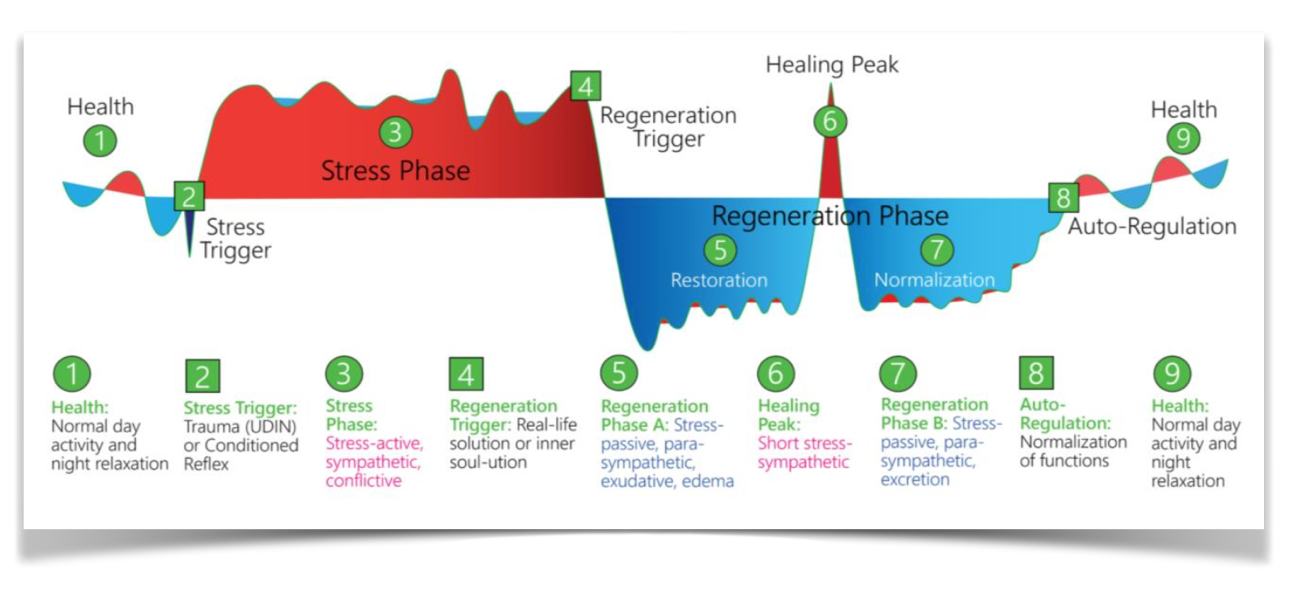 Well, it’s the exact same process I’ve described in the last few posts, in the nine points and phases of the biological healing process (as shown in above graphic)…except with chronic recurring symptoms, we’re never fully resolving the original stress trigger (the traumatic event, also known as a UDIN – because it’s usually Unexpected, Dramatic, you feel Isolated and have No strategy) and therefore, in every way, we oscillate between the sympathetic and the parasympathetic, each time that button, that still open unresolved emotional hurt, is re-pushed, is re-wounded, as shown in the graphic below.
Well, it’s the exact same process I’ve described in the last few posts, in the nine points and phases of the biological healing process (as shown in above graphic)…except with chronic recurring symptoms, we’re never fully resolving the original stress trigger (the traumatic event, also known as a UDIN – because it’s usually Unexpected, Dramatic, you feel Isolated and have No strategy) and therefore, in every way, we oscillate between the sympathetic and the parasympathetic, each time that button, that still open unresolved emotional hurt, is re-pushed, is re-wounded, as shown in the graphic below.
There are usually two or more aspects which are contributing to this pattern repeatedly occurring e.g. the original stress trigger (which will be how you emotionally and cognitively responded in that moment of unexpected stress), plus it could be an environmental aspect, such as pollen being present when you were triggered (so you may have recurring hayfever); or it may be a social aspect, such as a specific food was there at the time of the trigger (so you may have a food allergy); or it could be another social-environmental aspect, such as a specific place, like work, where you are always put down by your manager (so you always get lower back pain).
In the past, these recurring cycles were left with the ‘cause unknown’ question mark over them ❓by medics and medical manuals. We didn’t fully realise what was happening in the body-mind-social space. We didn’t really fully acknowledge that these elements were all connected.
We do know now though and I can’t imagine working without this knowledge in my practice…and those I have the privilege to work with express similar sentiments when they understand what’s truly happening within them. It’s empowering and gives you back your power and control over outcomes, rather than feeling helpless and at the mercy of your symptoms. It gives you options.
This is what you will learn when you embrace this knowledge. And embrace it or not, it’s biological science. It’s real. It’s happening in all of us. So we can take it and be informed. Or we can choose to ignore it.
Day one. Or one day. We can all choose when to begin.
You will learn what phase your symptoms are in; which of the six root causes require rebalancing and what steps you can take, which are workable and sustainable for you, towards your health and wellness goals.
We learn to appreciate that our symptoms aren’t random anymore. We can spot cycles and patterns…and with this knowledge, we can utilise appropriate methods to support where we’re at in this time and space and to ultimately help us reach our health and wellness goals, living a life we love and thrive in.
When would now be a good time for you to begin your own journey to health and wellness again?
Get in touch now, if you would like to know more and how you can begin to help yourself.
Your symptoms aren’t random…it’s biological intelligence.
Continuing on from yesterday’s blog post…in Meta-Health, we go several steps further with looking at, exploring and getting to the root cause of symptoms…because the research has shown us symptoms aren’t random. No one randomly gets a diagnosis of cancer or heart disease or MS or lymphoma or diabetes or whatever the diagnosis by pure chance. There will be a pattern which can be explored, analysed and understood, which has led to this diagnostic outcome.
There is absolute biological intelligence in our symptoms, which has direct connections to our emotions, thoughts/beliefs, stresses, lifestyle choices and the social environment we’re in.
There are very definitive themes which correlate to organ tissue symptoms and the presenting emotional stressors, beliefs, lifestyle and social situations.
So I’m inviting you to consider the paradigm shift from our current thinking of how symptoms occur and instead understand that there isn’t any randomness happening in our bodies when symptoms occur. They aren’t happening by accident…such as eczema, back pain, hearing loss, carcinoma in situ, chronic digestive issues, weight-gain…or fill in the_______.
Organ tissue (e.g. your digestion has many parts like stomach mucosa, oesophagus; the liver has parenchyma and gallbladder ducts etc) all respond in us in different ways, affected by different processes. So I encourage you to be open to the fact the stressors we have in our lives impact very specific parts of the body…specific organ tissue, according to how we perceive the world we live in.
Emotions we may feel, thoughts or beliefs we may have, affect, energetically speaking, very specific parts of our physiology e.g. repeatedly thinking and feeling “I’m not good enough…I’m not strong enough” will show up somewhere in the muscular-skeletal system…and often this is all happening in the sub-conscious mind, not our day-to-day conscious mind.
The same applies to our social environment which we live, work and play in and experiences we may have in these spaces. They again affect very specific parts of our body according to how we, as individuals perceive the situation, which translates as a conflict for us, according to our world view, how we see and interpret things in life.
Our lifestyle also plays a part…vitality, diet, fitness, sleep patterns all affect us. Not just for healthy living but also comfortable longevity, which has a good quality to it…physically, mentally and emotionally.
I’ll be exploring the biological process and phases our bodies go through in my next posts. So stay tuned to find out more soon.
And in the meantime, if you have symptoms and a diagnosis, which you would like to understand more, get in touch or book a call to get the ball rolling for your health and wellness now.
The Six Key Areas Where Symptoms Are Triggered
Research has shown there are six key areas where symptoms stem from.
Meta-Health looks at the big picture perspective…meta meaning big picture.
Many folks work in physiotherapy or the organ/biochemistry/physical level. Some work within the field of lifestyle approaches, looking at nutrition, diet, exercise etc. Further still, some folks focus in on the emotional aspects of health.
The reality is…we need to look at the whole person-big picture perspective when managing and healing symptoms…and there are 6 key areas, which all contribute to and affect the symptoms we experience. These key areas influence our health and the balance/imbalance of this, with the onset of symptoms, be they acute or chronic.
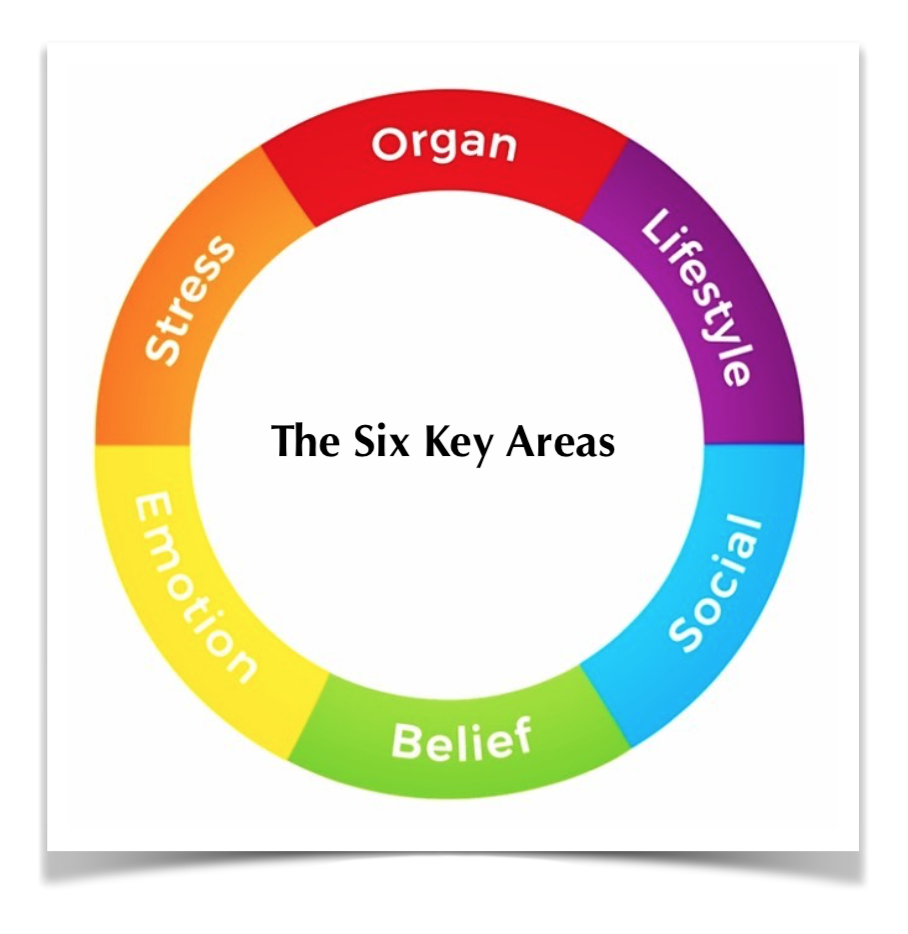
1. Organ tissue – obvious contributors…accidents, environmental toxins, food and drink over-indulgences. But what about those who eat well, exercise and are supposedly healthy? What are the other areas?
Science has proven that stress (2), our emotions (3) and our beliefs (4) also play a significant part in our overall health. Plus our social (5) relationships and the environment we’re in, also play a contributing role (at home, at work and out socially).
And of course, by no means least, our lifestyle (6) also plays a major role in our health. What we eat, drink and consume (including how much and how balanced); what physical activity we do; and our sleep patterns all have an impact, if they’re not regularly balanced. Furthermore, the personal care and household products we also use regularly, can and will also have an impact on your health and wellbeing, if they’re full of chemicals and ingredients, which are known disruptors of our natural biological system.
It’s difficult to argue with these factors any more…because they’re proven contributors to us feeling healthy and vital or not. So what’s my point…?
Well, there is more to this…another deeper layer which is only beginning to be properly talked about. So I’ll share this in my next post and get even more specific.
If you would like to know more and discuss your own health and wellbeing, then do get in touch now.
Day one, or one day…? You choose.
You are more than just a physical being
To continue the conversation on from yesterday’s post…if we look at ourselves as just physical beings, it’s rather finite e.g. our genes determine our destiny…our body is what it is and isn’t able to recover or reverse what’s happening to it with acute or chronic symptoms.
However, when we turn this on its head and look at ourselves for everything which we truly are at that quantum level…we are energy which is changing all the time.
When we recognise this aspect of who we actually are and realise we can influence this energy moving through us in any way we wish, we’re more empowered and able to shift and change the way we look at our body and the symptoms it’s presenting.
We are information and energy being passed through neuro-pathways in our organs, tissues & cells…
It’s all communicating together and offering us bio-feedback with that ache, pain, lump, bump or rash, to name but a few symptoms which show up.
At any given time, our body is working really hard to keep us safe and to survive, according to its perception of the world it’s in. The body is constantly adjusting to everything we throw at it each day with our thoughts, emotions, stresses at work/home/socially, with diet and movement, plus environmental toxins and pollutants as well, which includes all the personal care and household products you use. We are the masters of our own health and wellbeing…it is truly in our hands if we choose it.
As referenced in the mind-body-social post…every part of us is interconnected. Our body is talking to us…
The question is, how well are we listening?
…because every symptom will have a very bio-logical root cause. It’s basically the logic of your biology.
Everything which shows up in your body, every symptom and its related diagnosis (if you get your doctor’s medical opinion, which I highly recommend) does not happen by chance, bad luck or by what is often labelled as genetic. In fact, genetics account for less than 5% of any symptoms and dis-ease which occurs in the body – yes, you read that right.
Over 95% of all symptoms and their related illness labels are nothing to do with genes per se. This has been proven time and time again now, with particular kudos to Bruce Lipton, a cell biologist, who’s proven this scientific fact over and over again in his scientific research.
In future posts, we’ll explore even more closely what does happen and why, to help us all understand that we are in fact the masters of our health and its destiny…and we do in fact have the power to change outcomes, when we understand exactly what is happening in our body and why.


